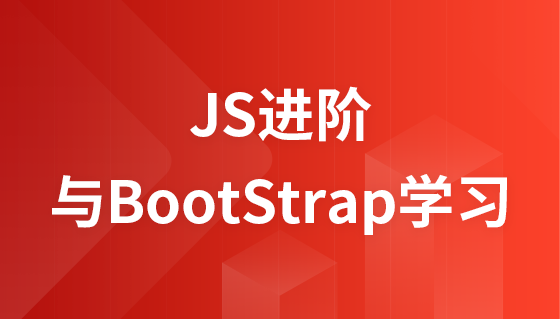
本文深入探讨go程序与c/lua组件进行通信的多种策略。我们将从传统的进程间通信(ipc)方法入手,如unix域套接字结合protocol buffers进行结构化数据交换,再过渡到更直接、高性能的语言嵌入式交互方案。重点介绍如何利用go的cgo模块实现与c的互操作,以及通过go-lua绑定库实现go与lua代码间的无缝调用,帮助开发者根据项目需求选择最合适的通信模式。
在现代软件开发中,不同编程语言编写的模块协同工作是常见需求。当Go程序需要与C或Lua编写的组件进行交互时,尤其是在C/Lua组件作为子进程运行时,如何实现高效、可靠的数据交换成为关键。本文将详细介绍两种主要的通信策略:传统的进程间通信(IPC)机制和更紧密的语言嵌入式交互。
当C/Lua组件作为独立子进程运行时,Go程序需要借助操作系统提供的IPC机制进行通信。虽然标准输入/输出(stdin/stdout)是简单的选择,但如果它们已被用于常规日志或输出,则需要考虑更专业的方案。
套接字(Socket)是实现进程间通信的通用且强大的机制,无论是在同一台机器上还是跨网络。
示例: 无论是Unix域套接字还是TCP/IP套接字,其核心都是建立连接、发送和接收字节流。Go程序可以监听一个套接字,子进程连接后即可双向通信。
// Go 服务器端(概念代码)
package main
import (
"fmt"
"net"
"os"
)
const (
socketPath = "/tmp/go_lua.sock" // Unix域套接字路径
// port = ":8080" // TCP/IP套接字端口
)
func main() {
// 清理旧的套接字文件
os.Remove(socketPath)
listener, err := net.Listen("unix", socketPath) // 或 net.Listen("tcp", port)
if err != nil {
fmt.Println("Listen error:", err)
return
}
defer listener.Close()
fmt.Println("Go server listening on", socketPath)
for {
conn, err := listener.Accept()
if err != nil {
fmt.Println("Accept error:", err)
continue
}
go handleConnection(conn)
}
}
func handleConnection(conn net.Conn) {
defer conn.Close()
fmt.Println("Accepted connection from", conn.RemoteAddr())
buffer := make([]byte, 1024)
n, err := conn.Read(buffer)
if err != nil {
fmt.Println("Read error:", err)
return
}
receivedData := string(buffer[:n])
fmt.Printf("Received from client: %s\n", receivedData)
response := "Go says: Hello Lua!"
_, err = conn.Write([]byte(response))
if err != nil {
fmt.Println("Write error:", err)
return
}
}C/Lua子进程则需要实现相应的客户端逻辑来连接并读写套接字。
当需要在Go和C/Lua之间交换复杂的数据结构时,仅仅发送原始字节流是不够的。数据序列化协议变得至关重要,它能确保不同语言之间对数据的解析和理解保持一致。
示例:
定义.proto文件 (message.proto):
syntax = "proto3";
package myapp;
message CalculationRequest {
int32 operand1 = 1;
int32 operand2 = 2;
string operation = 3;
}
message CalculationResponse {
int32 result = 1;
string error = 2;
}生成代码: 使用protoc工具为Go和C/Lua生成代码。 例如,对于Go:protoc --go_out=. message.proto
Go程序中的使用:
package main
import (
"fmt"
"log"
"path/to/myapp" // 根据实际生成的包路径修改
"google.golang.org/protobuf/proto"
)
func main() {
req := &myapp.CalculationRequest{
Operand1: 10,
Operand2: 20,
Operation: "add",
}
// 序列化
data, err := proto.Marshal(req)
if err != nil {
log.Fatalf("Failed to marshal request: %v", err)
}
fmt.Printf("Serialized data: %x\n", data)
// 模拟通过套接字发送和接收数据
// ...
// 反序列化
newReq := &myapp.CalculationRequest{}
err = proto.Unmarshal(data, newReq)
if err != nil {
log.Fatalf("Failed to unmarshal request: %v", err)
}
fmt.Printf("Deserialized request: %+v\n", newReq)
}C/Lua子进程同样会使用生成的代码来序列化和反序列化数据,并通过套接字进行传输。
如果C/Lua代码并非必须作为独立的操作系统进程运行,而是可以作为库或运行时嵌入到Go程序中,那么我们可以采用更直接、性能更高的语言间交互方式,避免IPC的开销。
cgo是Go语言提供的一个强大工具,允许Go程序调用C函数,反之亦然,C代码也可以回调Go函数。由于Lua通常作为C库嵌入到C程序中,因此cgo可以作为Go与C/Lua整体交互的桥梁。
示例:Go调用C函数
// main.go
package main
/*
#include <stdio.h>
#include <stdlib.h> // for free
// C函数,可以接收Go字符串并打印
void c_print_message(const char* msg) {
printf("C says: %s\n", msg);
}
// C函数,模拟进行计算,并可能需要回调Go函数
// (回调Go函数需要更复杂的设置,这里仅作概念性展示)
int c_perform_calculation(int a, int b) {
printf("C is calculating %d + %d\n", a, b);
return a + b;
}
*/
import "C"
import (
"fmt"
"unsafe"
)
func main() {
// Go调用C函数
goMessage := "Hello from Go to C!"
cMessage := C.CString(goMessage) // 将Go字符串转换为C字符串
defer C.free(unsafe.Pointer(cMessage)) // 释放C字符串内存
C.c_print_message(cMessage)
// Go调用C函数进行计算
result := C.c_perform_calculation(10, 25)
fmt.Printf("Go received calculation result from C: %d\n", result)
// 进一步,C可以调用Go函数 (通过 //export GoFunctionName)
// 这需要更复杂的设置,通常涉及Go函数签名匹配C函数指针
}通过这种方式,Go程序可以启动C代码,C代码中再启动Lua解释器并加载Lua脚本。Go与C之间的通信(例如传递数据或触发C中的Lua执行)将通过cgo完成。
除了通过cgo间接与C/Lua交互,还有一些专门的Go库提供了Go与Lua解释器之间更高级、更直接的绑定。这些库通常在底层使用cgo,但为开发者提供了更友好的Go API。
示例:Go与Lua绑定库的概念性使用
package main
import (
"fmt"
// "github.com/aarzilli/golua/lua" // 假设使用golua或其他绑定库
// 实际代码会根据具体库的API有所不同
)
// 模拟一个Go-Lua绑定库的接口
type LuaState struct {
// 内部状态,模拟Lua解释器
}
func NewLuaState() *LuaState {
fmt.Println("Initializing Lua interpreter...")
return &LuaState{}
}
func (ls *LuaState) Close() {
fmt.Println("Closing Lua interpreter...")
}
// 模拟Go执行Lua字符串
func (ls *LuaState) DoString(luaCode string) error {以上就是Go与C/Lua程序高效通信:IPC与语言嵌入式方案详解的详细内容,更多请关注php中文网其它相关文章!

每个人都需要一台速度更快、更稳定的 PC。随着时间的推移,垃圾文件、旧注册表数据和不必要的后台进程会占用资源并降低性能。幸运的是,许多工具可以让 Windows 保持平稳运行。




Copyright 2014-2025 https://www.php.cn/ All Rights Reserved | php.cn | 湘ICP备2023035733号